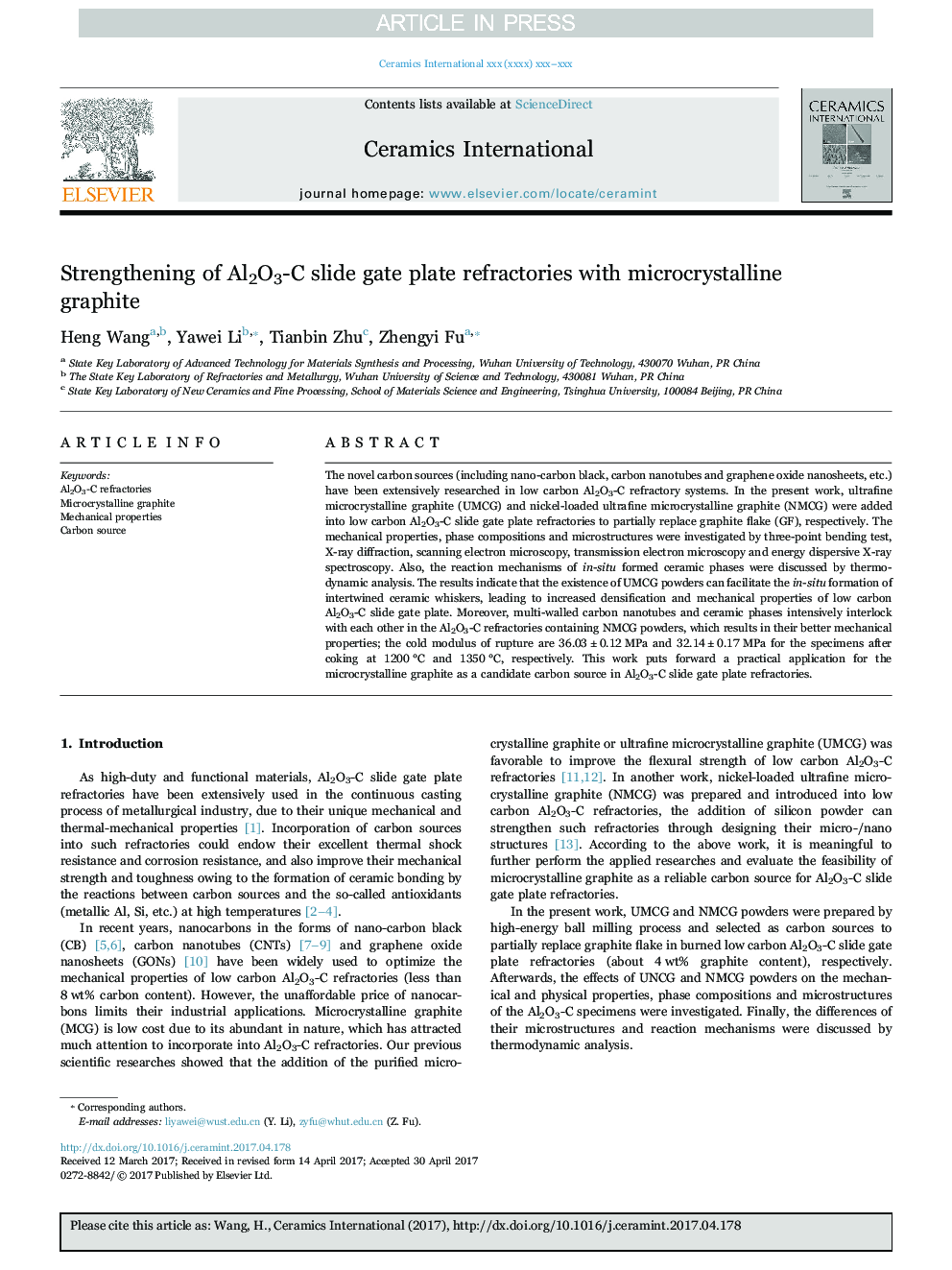| Article ID | Journal | Published Year | Pages | File Type |
|---|---|---|---|---|
| 5437648 | Ceramics International | 2017 | 7 Pages |
Abstract
The novel carbon sources (including nano-carbon black, carbon nanotubes and graphene oxide nanosheets, etc.) have been extensively researched in low carbon Al2O3-C refractory systems. In the present work, ultrafine microcrystalline graphite (UMCG) and nickel-loaded ultrafine microcrystalline graphite (NMCG) were added into low carbon Al2O3-C slide gate plate refractories to partially replace graphite flake (GF), respectively. The mechanical properties, phase compositions and microstructures were investigated by three-point bending test, X-ray diffraction, scanning electron microscopy, transmission electron microscopy and energy dispersive X-ray spectroscopy. Also, the reaction mechanisms of in-situ formed ceramic phases were discussed by thermodynamic analysis. The results indicate that the existence of UMCG powders can facilitate the in-situ formation of intertwined ceramic whiskers, leading to increased densification and mechanical properties of low carbon Al2O3-C slide gate plate. Moreover, multi-walled carbon nanotubes and ceramic phases intensively interlock with each other in the Al2O3-C refractories containing NMCG powders, which results in their better mechanical properties; the cold modulus of rupture are 36.03±0.12 MPa and 32.14±0.17 MPa for the specimens after coking at 1200 °C and 1350 °C, respectively. This work puts forward a practical application for the microcrystalline graphite as a candidate carbon source in Al2O3-C slide gate plate refractories.
Related Topics
Physical Sciences and Engineering
Materials Science
Ceramics and Composites
Authors
Heng Wang, Yawei Li, Tianbin Zhu, Zhengyi Fu,
